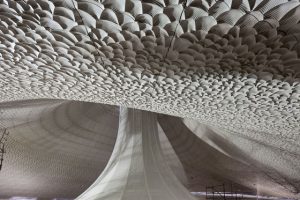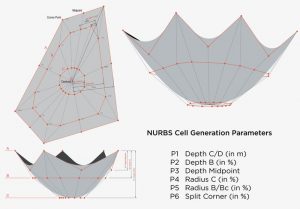A design based on algorithms that interested me is the auditorium in the Elbphilharmonie, which is a concert hall in Hamburg designed by an architecture firm called Herzog and de Meuron and opened in 2017. The Elbphilharmonie is a complex that resembles a city; it offers many different attractions, such as the main philharmonic hall, music hall and restaurants.


TThe building complex as a whole is extremely intricate, with its many geometries and attractive materiality but an area that is more impressive in regards to its use of technology would be the largest concert hall. The concert hall was created based on algorithms. Over 10 years, architects Jacques Herzog and Pierre de Mueron created about 10,000 gypsum fiber acoustic panels that cover the walls. Basically, the entire auditorium is covered in algorithmic, NURBS-based cells that look like shallow dugouts in the sand. The concave cells look like they were hand-carved, but were actually milled with CNC milling machines, based on precise calculations made computationally. The algorithm that lies underneath varies the characteristic of each cell so that individual cells play their unique role in handling the sounds and perfectly fill up the walls. Some of the variables here are depth, radius and splits, as seen in the image directly below.

With the help of an acoustician (Yasuhisa Toyota) the architects were able to create and fabricate a space that insures the highest acoustic qualities that a music hall can ask for. The variations that the algorithm randomly creates within its parameters significantly affect the sound in the auditorium. Depending on the shape of the surface that sound waves hit, the sound gets manipulated differently: some are absorbed by the surface, while others are disseminated, ultimately creating a balanced harmonic sound.
Algorithms in this case allowed the firm to manifest its style of conveying through materials and complex geometries and suggest at infinite possibilities of creating structures that require such finesse that might not be achievable through manual work.
![[OLD FALL 2017] 15-104 • Introduction to Computing for Creative Practice](wp-content/uploads/2020/08/stop-banner.png)